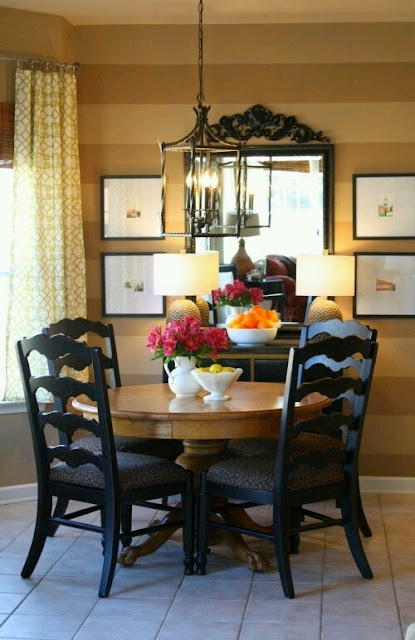First up, is a tone-on-tone effect. I did this striping technique in the foyer of my second home. I painted the walls in a flat finish and then did the stripes in the same color but in a satin finish. My colors were similar to the color in the picture below. I love this look because it is very subtle. The tone-on-tone stripes would look great in a formal dining room, a master bedroom, or bathroom.
The next set of pictures shows stripes in the same color family, but with different shades. This is similar to the tone-on-tone stripes, but with this look, you use the same paint finish, i.e., flat, eggshell, or satin.
 |
| I would love to do this in my breakfast nook! |
 |
| I am seriously thinking about doing this in my master bedroom! |
Another striping technique is a color-block look. This is probably the easiest technique to do. Color blocking is using one to three colors and using wide stripes. A color-block look would work well in a transitional or contemporary space.
Take a look at my foyer again. I still love these stripes. The original color of the wall is Sherwin Williams Latte. I then added two Sherwin William colors--Steady Brown (my dining room color) and Coconut Husk (my living room color). Since I have no walls to display artwork or place furniture pieces, the stripes add interest to an otherwise boring space.
For a really bold look, you can use colors opposite each other on the color wheel. Or, colors that create a contrast. Check out the look of these rooms:
 |
| I love this black and white together! |














The walls are all beautiful. The single thick blue striped wall in that living room with the fireplace really caught my eye... :)
ReplyDeleteThe thick blue stripe is my favorite one also, and easy to do.
DeleteI have always liked that look especially when it's a little bit subtle. Also, I love the look of solid walls with the big horizontal stripes on drapes. :)
ReplyDeleteThe tone-on-tone is my favorite of all of the striped walls. I think it's a classic look. When you're tired of it, just paint over it!
Delete